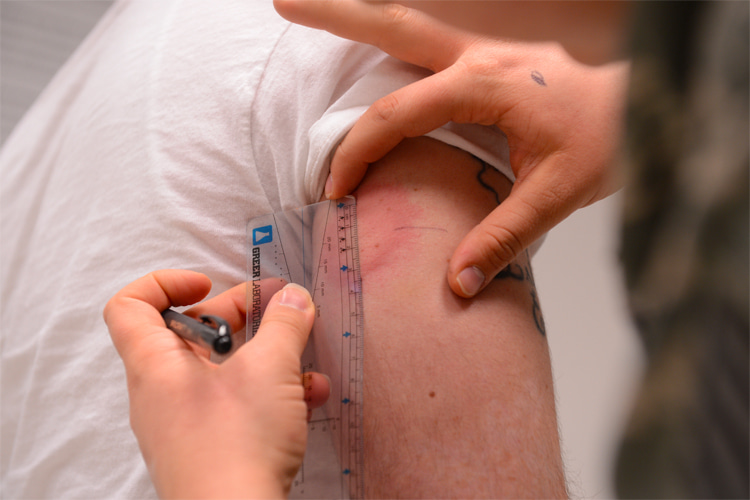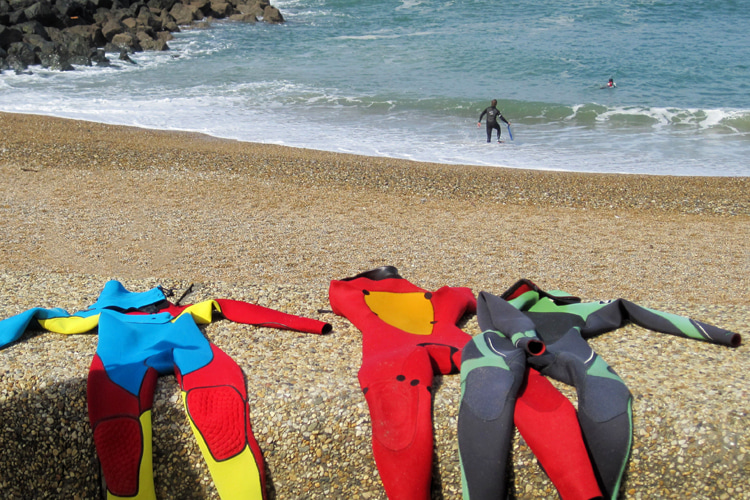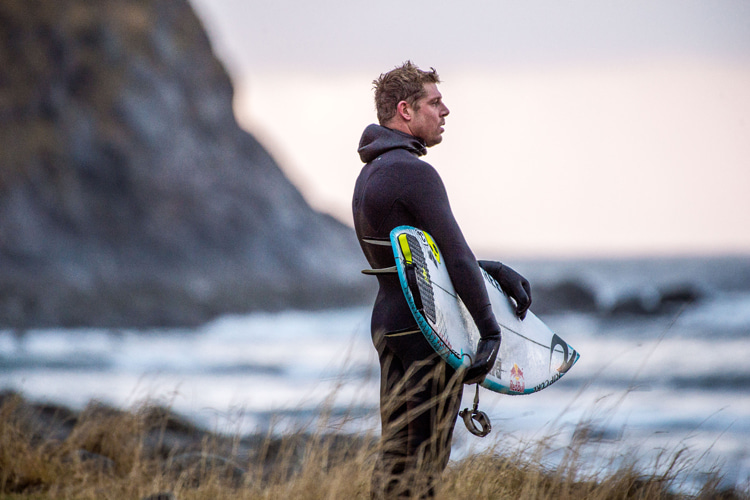Have you ever had an allergic reaction to a newly purchased wetsuit? Why does your neoprene skin give you a rash?
Wetsuits are a fundamental piece of equipment in modern surfing.
Surfers can only really paddle out wearing a pair of boardshorts in tropical latitudes. Otherwise, it's nearly impossible to stay out for an hour without comfortable neoprene protection.
Some wave riders, though, develop an allergic reaction to wetsuits, and apparently, this is more common than anyone thinks.
As soon as they put their second skin on, their necks, armpits, arms, hands, and groin areas get swollen and irritated.
Itching is the first manifestation, and it only makes things worse.
Most dermatologists prescribe diphenhydramine capsules and fluocinolone cream, and the irritation tends to disappear after a couple of days.
However, every time you put the wetsuit on again, the reaction returns, sometimes even worse. Curiously, rashguards don't usually help at all.

Common Causes
So, what causes wetsuit allergy, and how can surfers put an end to it?
In most cases, after you buy a brand-new wetsuit, you cannot return it - the surf shop won't accept it, and neither will the brand.
They might probably tell you there's no existing defect in the neoprene and no problem at all with the polyester, nylon, spandex, or lycra lining.
What should a surfer do, then?
"Some things - like poison oak - cause a reaction in many people, while other things (like wetsuit glue) affect only a very few," explained Mark Renneker, Kevin Starr, and Geoff Booth, authors of the book, "Sick Surfers Ask the Surf Docs & Dr. Geoff."
"You can be allergic to a substance on first contact or suddenly develop an allergy to something you've been around all your life."
The good news is that, according to these experienced surf doctors, allergies can disappear as quickly as they appear.
The medical specialists confirm that a topical steroid fluocinolone cream and antihistamine diphenhydramine capsules may decrease itching and swelling.
Nevertheless, it is far more important to figure out what's causing the skin reaction and prevent it from happening.
Some people are sensitive to chemicals used in the manufacturing process of some wetsuit models or brands in particular.
"Wetsuit makers are constantly trying out new processes and compounds, and it takes only a trace of a chemical to trigger a reaction," the doctors underline.
Figuring out exactly which chemical is causing the reaction is not worth it.
You'd have to identify all components of a wetsuit and find an allergist willing to test you for the reactions to every element of the neoprene.

A/B Testing
Renneker, Starr, and Booth suggest a different approach to wetsuit allergies. Here's what you could do:
1. Wash the Wetsuit Out with Gentle Detergent
The goal is to try and remove a surface chemically.
The fact that a rash guard didn't help could mean it was something on the surface of the neoprene dissolving through the lycra.
2. Try Wearing the Wetsuit in a Swimming Pool or Bathtub
The goal is to rule out the possibility that the rash was caused by something in the seawater.
You could be catching waves with algae or debris stuck inside the neoprene or held next to your body by the wetsuit (hands, neck, face, or feet).
3. Borrow and Try Other Wetsuits
Different types of nylon and neoprene could cause - or not - a dermatological reaction.
Also, make sure to moisturize your skin after a session.
"If, after trying the above suggestions, it still seems your new wetsuit is the culprit, don't keep trying to use it," add the specialists.
"Call up the manufacturer and tell them your doctor said you'd had an allergic reaction to their wetsuit."
The manufacturers may be open and should be interested in taking it back and analyzing it thoroughly so that it doesn't happen again.
Last but not least: if you can, or if needed, bypass the customer service department and try to contact someone in the company's research and development unit.
